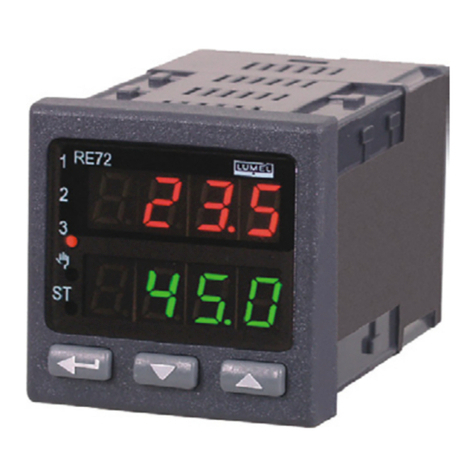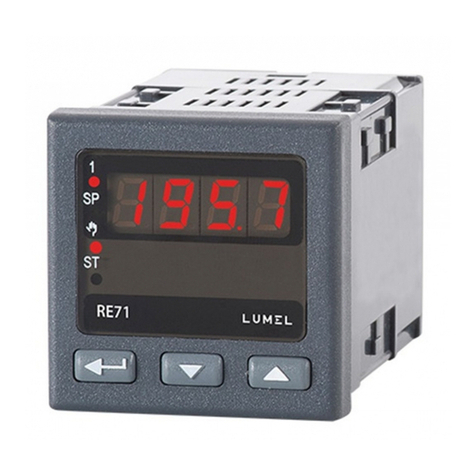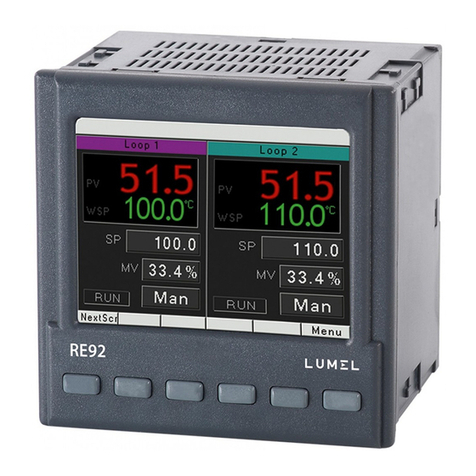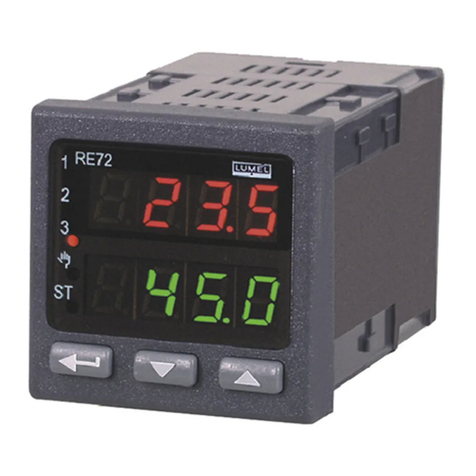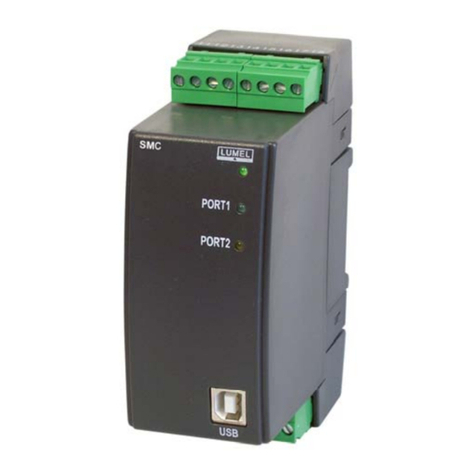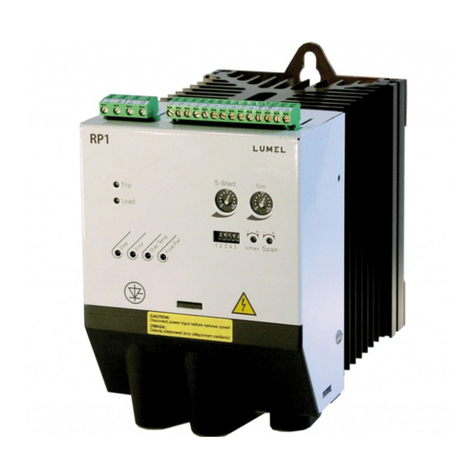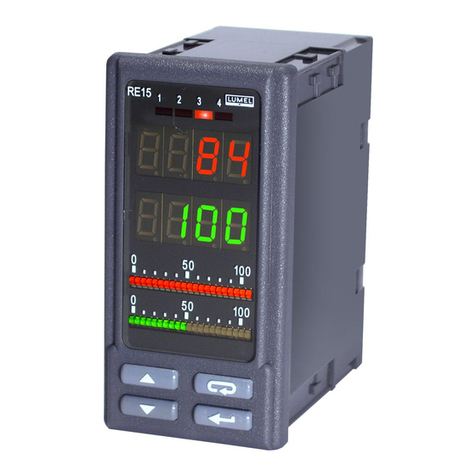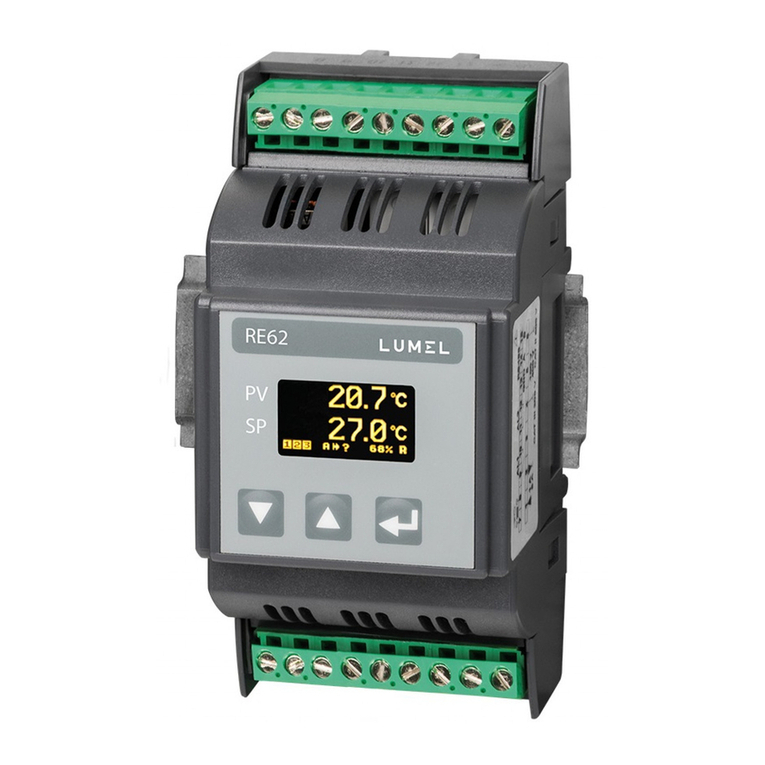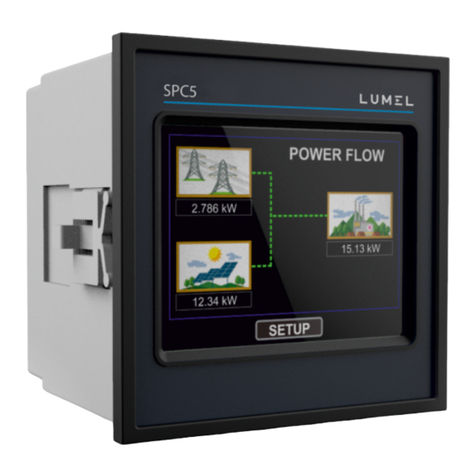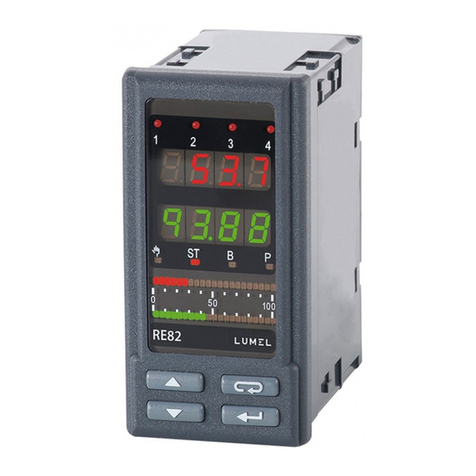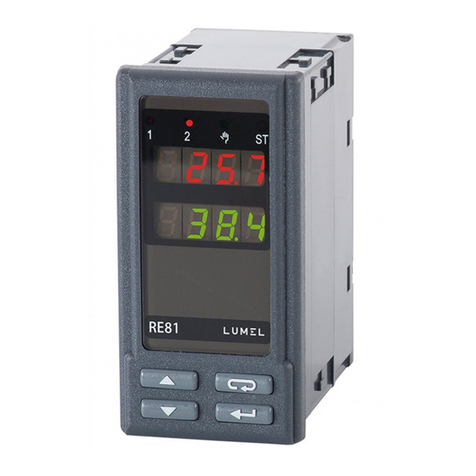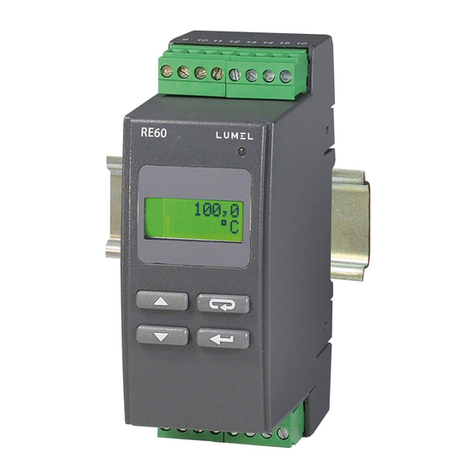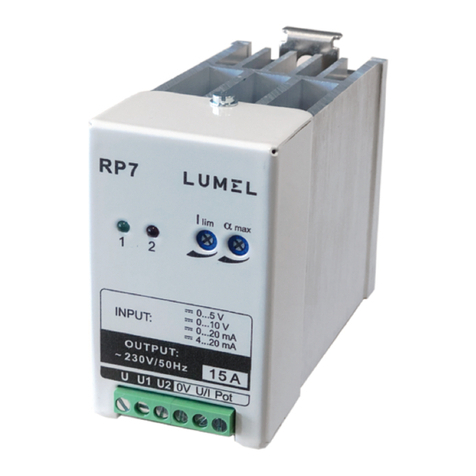5
1. APPLICATION
The RP3 power controller is a contactless three-phase power energy electronic
device which includes a thyristor connector and an electronic gate triggering
system.
This power controller allows the control of the power delivered from a three-
phase voltage source to an electrical energy load in function of the control signal
input.
The RP3 power controller is destined for three-phase actuators with resistance
or resistance-inductance loads in control systems and automatic temperature
control.
The application area of RP3 power controllers comprises:
electrical furnaces and drying constructions, particularly industrial tunnels
and belt- type furnaces, furnaces for annealing and hard soldering, crucible
furnaces and smelters, furnaces for hardening in salt baths.
devices of mechanical engineering, aggregates and extruding presses for
plastics, devices, for winding and tempering of springs, spot welding and
seam welders,
production of glass and glazing, installations and devices for drying in
infrared and ultraviolet radiation, ladles for glass melt and heating of feeding
devices, furnaces for glass forming.
chemical and petroleum industries, facing heaters of tube installations,
preheating installations.
2. BASIC REQUIREMENTS, OPERATIONAL SAFETY
Power controllers are applied in high-current installations in which live devices
occur, that can be a source of hazard.
Considering the personnel safety, one should observe following principles:
Devices can be installed, serviced and maintained exclusively by
a suitably qualified personnel, having essential knowledge about
equipment.
RP3 power controllers should be connected to the power network
according to the present operative regulations and standards
concerning electrical installations, and concerning specially
the protection against electric shocks
During the start and operation of the starting system, one must comply
with recommendations included in this user’s manual (and specially
to sections 4, 5 and 6).
Qualified personnel defines persons which are acquainted with the user’s manual,
assembly starting and service of the product, and have appropriate qualifications
to carry out these activities.
